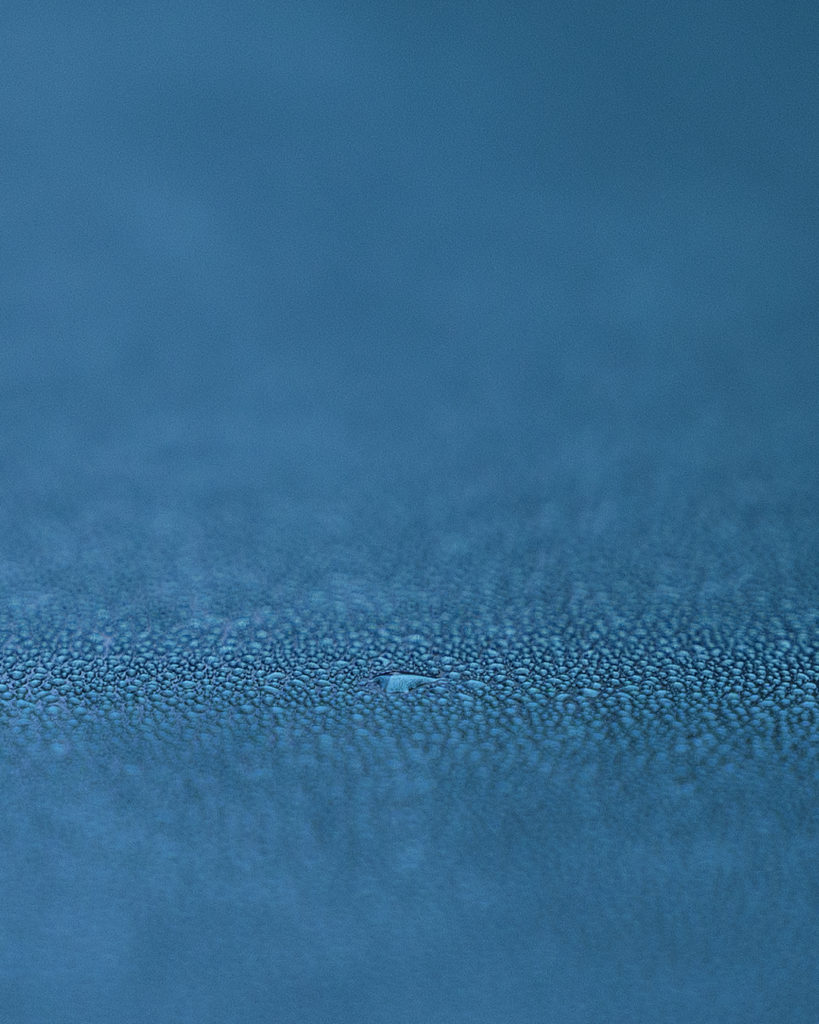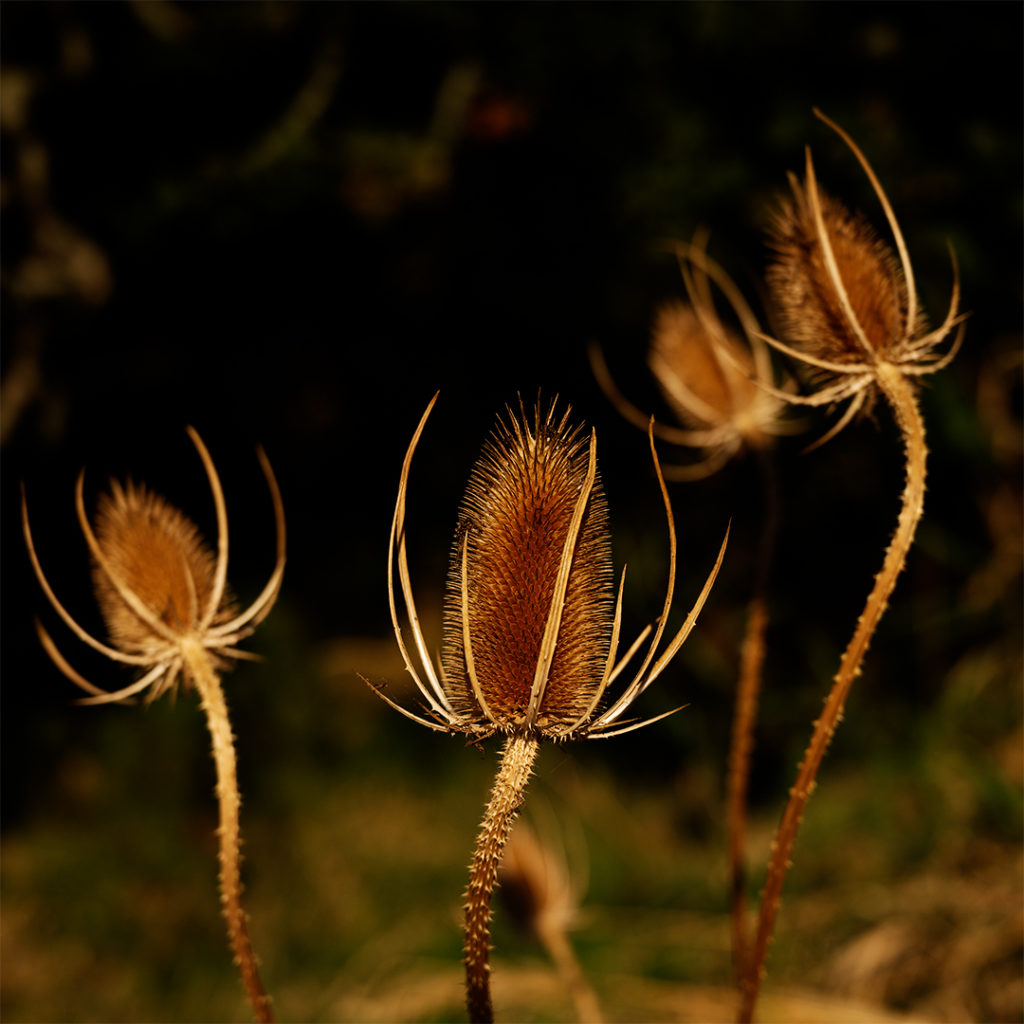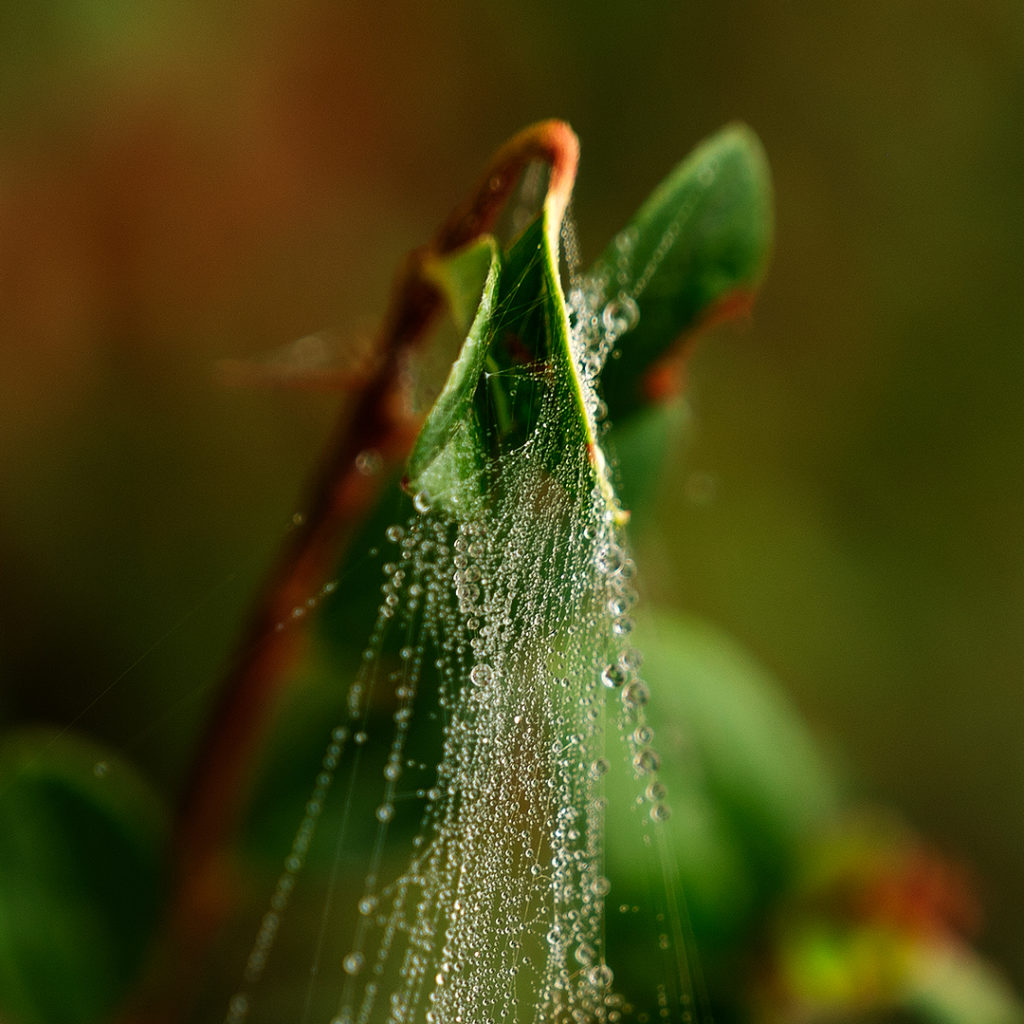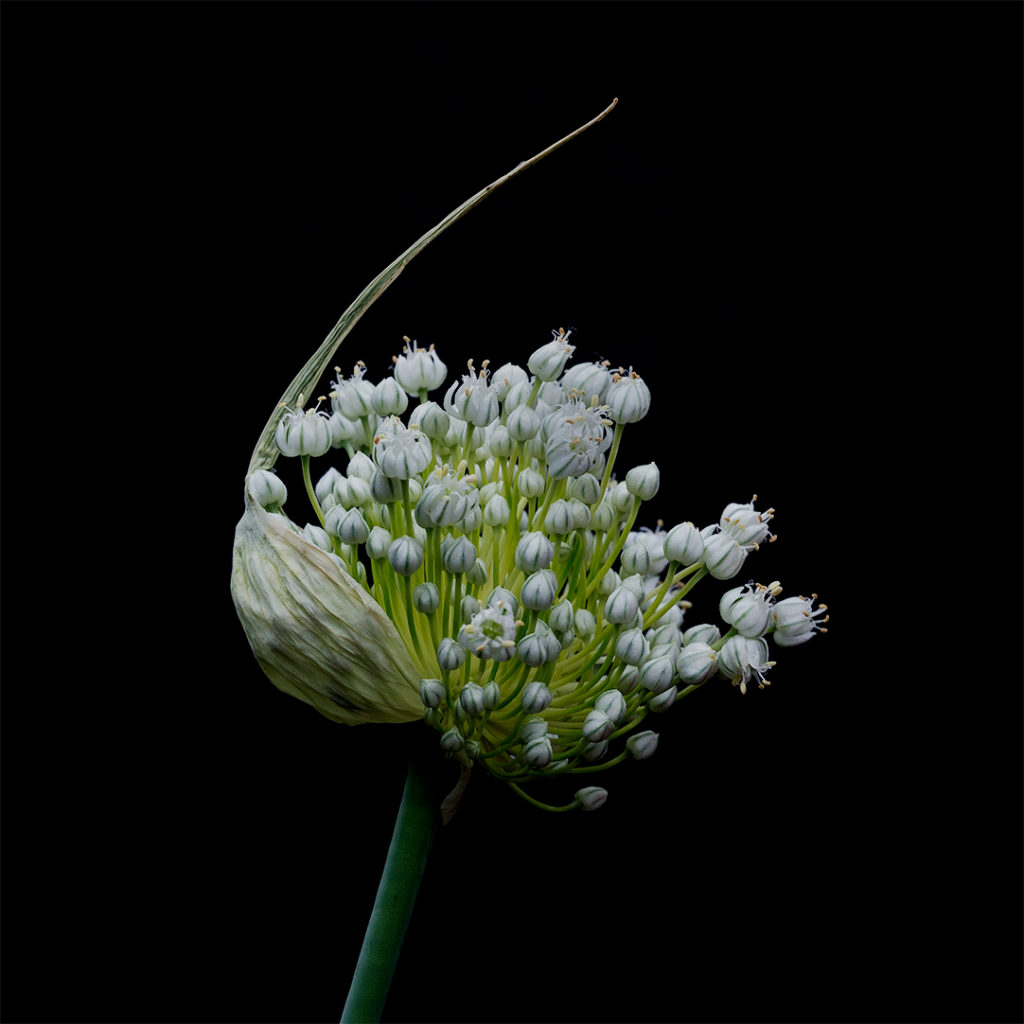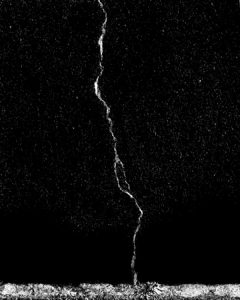Looking Closer
This is a picture of a plant that, at first glance, seemed to be dead. Maybe it really was, I’m not sure. However, a closer look revealed these little tufted ends, probably some sort of flower, so I took this picture. I think it’s interesting, like a little unexpected bit of elegance.
It’s also interesting because of the lesson it gives that we sometimes need to look closer at things to see their beauty, to see all that’s there. Photography is often about seeing, but it’s so easy to focus on what is easy to see, what would be obvious to anyone looking at the same thing.
Read more
Outside the Region of Clarity
This is an example of limited depth of field. Only a narrow band is clear, and things become fuzzy when we move away from it. The further we get from the band of focus, the less we can see what’s going on.
In this simple case, it’s pretty easy to see that there’s not much going on in the fuzzy regions; we can infer, probably pretty accurately, that the same drop-covered surface extends in both directions and the result is just an increasingly smooth tone as things get more and more out of focus.
If there was more going on in the fuzzy areas, with vague lines and objects, regions of different color, and so on, then we might be able to guess what’s going on. Of course, the likelihood of being right diminishes the further we get from the zone of clarity even for a richer image.
Read more
Consciousness and Spherical Photography
Previously I have written about how spherical photography can be a metaphor for looking around, and how it illustrates the value of doing so. There is no comparable way to change the view in standard photography, of course. However, we can still choose what part of a photograph to focus on.
Generally, however, our eyes move around a photograph without much conscious effort, and photographers often design pictures to guide the viewer’s gaze through the use of color, composition, and so on. The general tendency is to follow the artist’s lead.
With spherical photographs, however, we not only have the ability to look around more, but that action is generally much more deliberate. Instead of the unconscious movements of our eyes, viewing a spherical photo involves moving a mouse, or swiping on a screen, or moving our head while wearing a special headset. In any case, it is a much more deliberate, conscious effort.
This difference between static photographs and interactive spherical photographs allows us to explore some of the ideas around what is meant by “conscious” in this sense. It typically refers to an act done with deliberation and full awareness. Implying, among other things, that there is a mind, a consciousness, involved.
We use this term easily; it seems to be something that we all understand even though the nature of consciousness itself is still a mystery. Are we just the result of chemical reactions, so that looking at a spherical picture just involves different chemical reactions? Or is there more to us than that, something beyond the material, such that the viewing intent is as mysterious and non-physical as our minds?
This is a question that science has not yet answered. It’s not even clear if science can answer it since it may involve things beyond the physical, material world. Even defining the problem is still a challenge. Thus, we may need additional tools, which is why some mind researchers have suggested that the arts offer interesting insights into the nature of consciousness.
Perhaps photography can play a role here, and that is one of the reasons that spherical photography is more interesting than just another way to create pictures. Perhaps it can help explore the mystery of consciousness.
For, if the mind is more than just material, this has big implications for our understanding of all reality, of the whole universe.
Dance of the Thorns
This picture of weeds looks very different depending on how we see it. Looking closely at the plants, they seem spikey, forbidding, like they will break if touched. But looking at the overall arrangement, it evokes the graceful lines of ballet dancers — easy to imagine flowing movement.
This is an example of how observing things at different scales can cause us to see them differently.
Read more
Local Wonder
Photographers, and artists in general, often use the idea of an “artistic vision” to describe the kind of work that they do. I find that idea to be helpful, that it can provide focus when working on my own art and craft. Of course, it’s always great to work on things just for fun, and a lot of good work can be produced that way. But for myself, it helps to also have a focus, a goal when setting out to create pictures.
So, here is a first pass at what I’ve found most interesting to pursue in photography. I call it “Local Wonder”.
Read more
Convergence
This scene caught my eye because of the way many strands of web all converged on the single leaf. This was taken on a foggy morning, and the strands stood out because they were covered in drops of water. I think the thing that seemed surprising was the sheer number of individual strands.
Looking at it later, I was also struck by the many different places that the strands came from, creating a powerful structure for catching food. The individual strands work together, producing something that is stronger than a single single one.
Ideas can work this way.
Read more
Escape
This is a picture of a leek blossom, just opening up. It’s actually a bundle of small flowers.
I like this picture because of its beauty. Part of that, to me, is the sense of things moving towards the right. There’s a tension, a leaning in that direction that makes it seem as if individual flowers are straining to move that way. The tilt of the blossom, the curve at the top of the casing, the loose spacing of the flowers at the right, all work to give this sense.
It looks as if the blossoms are bursting out, trying to escape and get away from the pod, like some alien capsule discharging its crowd of travelers after a very long voyage.
This sense of escape is something we can all identify with. Aren’t there times in our lives when we long to escape? It may be from the daily grind, from a bad job or relationship, from a disease or other uncomfortable situation.
Read more
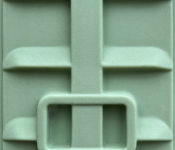
Seeing With Awareness
I took this picture recently while on a photo walk. During the walk, I was intentionally open to new perspectives, so it’s easier to notice things that I would normally miss.
In this case, it seemed like the box appeared to be a face. Now, this box is in our front yard and I’ve probably looked at it hundreds of times without noticing that. But with an open mind, the association jumped out.
Read more
Another Way to Focus
I recently took a picture of some plants that had interesting leaves. The picture had a calm aspect, the details on the leaves looking almost fuzzy. A little later, I reprocessed it to be black and white. The result gave a different feel to the picture. With the green color removed, the unusually shaped leaves and almost spiky texture jumped out.
Here are the two versions:
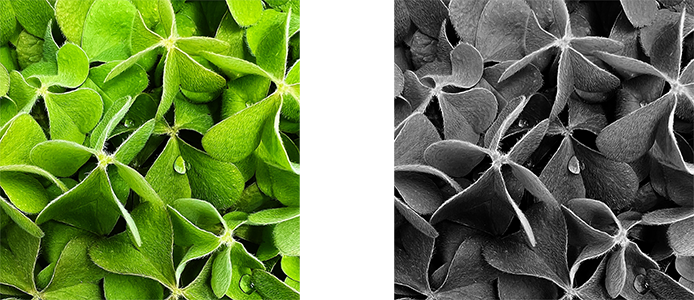

Not A Photograph
This picture started out as a photograph of a crack in the street. The shape reminded me of a lightning bolt, so as an exercise, I processed it in Photoshop to enhance that freeling. Carefully cropped it, inverted it so the black crack became white, and so on.
The result is a little abstract, but I think gets the idea across of a lightning bolt striking in a field.
Read more


